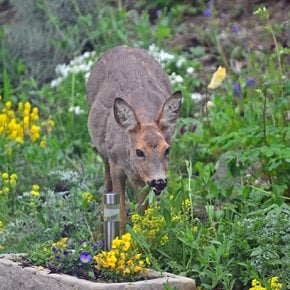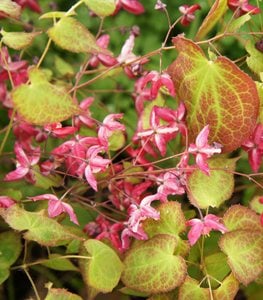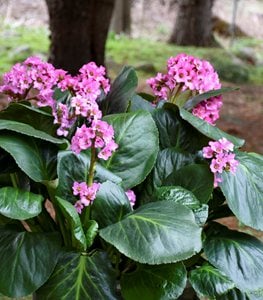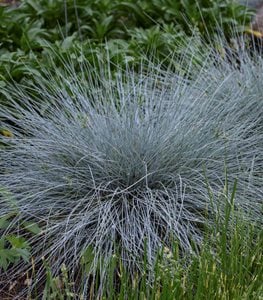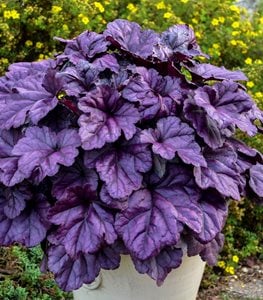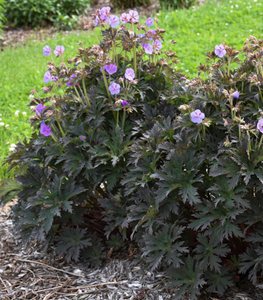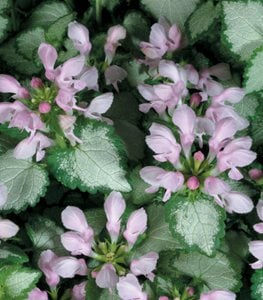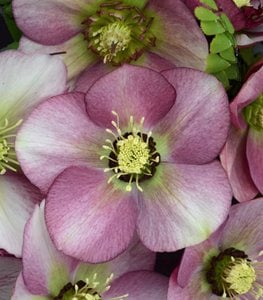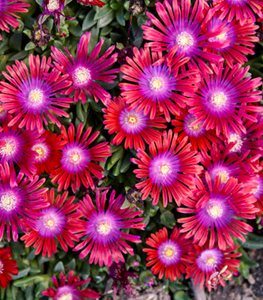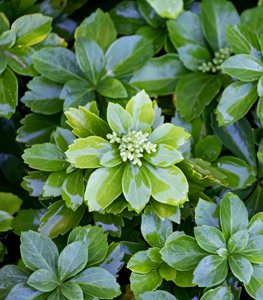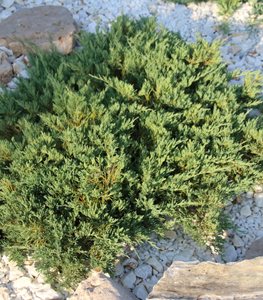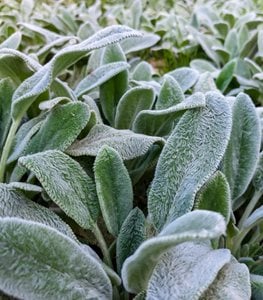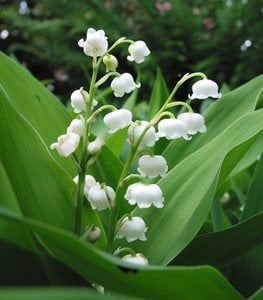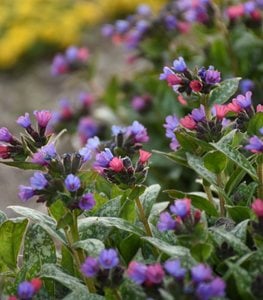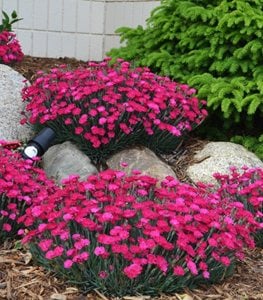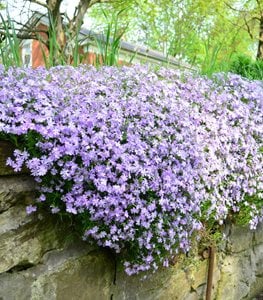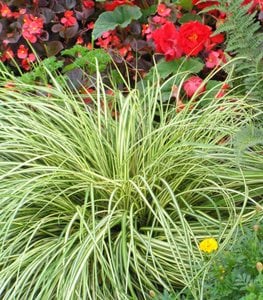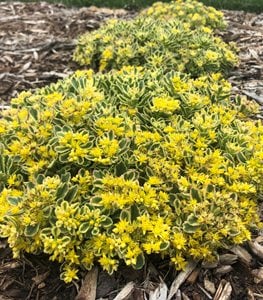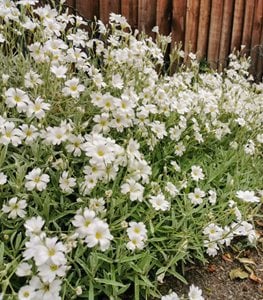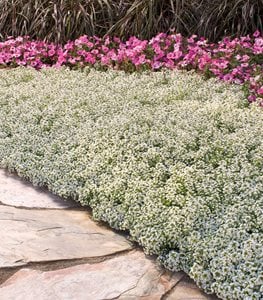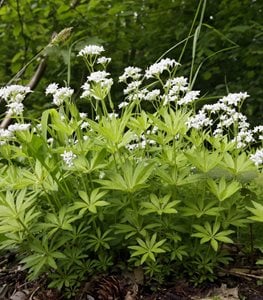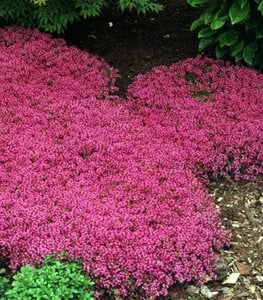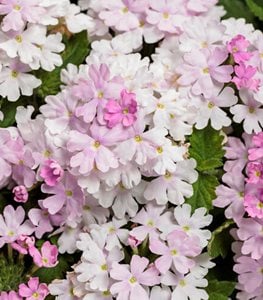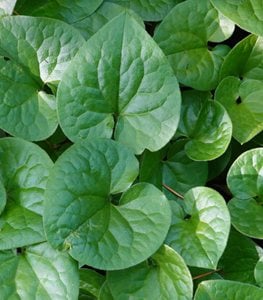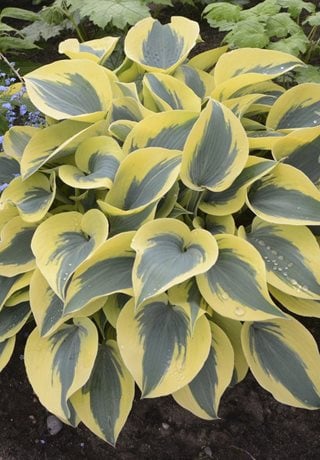25 Deer-Resistant Ground Covers to Grow
Include these ornamental ground covers in your landscape to help reduce deer damageGardeners who live in deer-prone areas know firsthand the damage that a hungry herd can cause to treasured garden plants. By taking preventative measures such as choosing plants that deer dislike, this damage can be reduced. Ground covers are less accessible to deer than taller plants that are easier to reach, with a dense compact habit that makes them more difficult to graze on.
On this page: Why Deer Avoid Certain Plants | Deer-Resistant Ground Covers | Landscaping Tips
On this page:
WHY DEER AVOID CERTAIN PLANTS
Deer are more sensitive to smell and taste than humans, and avoid certain textures. Although no plant is completely deer proof, some plants have qualities that make them less desirable than others, including:
- Strong scent
- Bitter taste
- Rough, sharp, fuzzy, or fibrous texture
- Toxic properties that can cause digestive upset
By choosing ground covers with some or all of these characteristics, deer damage can be minimized without resorting to chemicals, fencing, or other deer deterrents. Here are some of the best deer-resistant ground covers to grow:
25 DEER-RESISTANT GROUND COVERS TO GROW
BARRENWORT (Epimedium spp.)
Zones: 5-9
Exposure: Partial sun to full shade
Habit: Low spreading habit
Height/Spread: 8 to 12 inches tall, 12 to 36 inches wide
Bloom time: Spring
Why deer avoid it: The leaves have a rough texture and bitter taste that deer dislike, while the plants contain compounds that are toxic or unpleasant.
Also known as bishop’s hat, this long-lived perennial produces delicate four-petaled flowers in early spring that are followed by lance- or heart-shaped foliage in different colors and patterns. This spreading ground cover does well in challenging dry shade where little else will grow. Plant underneath trees or shrubs, in a woodland setting or rock garden. The University of New Hampshire notes that barrenwort is one of the most deer-tolerant plants for shady gardens.
BERGENIA (Bergenia spp.)
Zones: 3-9
Exposure: Partial sun to shade
Habit: Upright spreading habit
Height/Spread: 8 to 12 inches tall, 12 to 36 inches wide
Bloom time: Spring
Why deer avoid it: Deer tend to leave bergenia alone due to the thick, leathery texture of the foliage.
Also known as pigsqueak, this hardy perennial has large glossy evergreen foliage and attractive flower clusters that appear in late winter and early spring. Use this low-maintenance ground cover in a rock garden or massed along a slope. Learn more about growing bergenia.
Pictured: 'Miss Piggy' pigsqueak from Proven Winners.
BLUE FESCUE (Festuca glauca)
Zones: 4-8
Exposure: Full sun to light shade
Habit: Mounding clumping habit
Height/Spread: 8 to 12 inches tall, 12 to 36 inches wide
Bloom time: Late spring to summer
Why deer avoid it: Plants have little nutritional value, with a texture that is not preferable to deer.
This beautiful ornamental grass has a compact clumping habit, with wispy silvery blue foliage that adds soft texture and structure to the landscape. Use in mass plantings, containers, rock gardens, or as edging.
Pictured: 'Blue Whiskers' blue fescue from Proven Winners.
CORAL BELLS (Heuchera spp.)
Zones: 4-9
Exposure: Partial sun to partial shade
Habit: Mounding or spreading habit
Height/Spread: 6 to 18 inches tall, 12 to 30 inches wide
Bloom time: Late spring to mid summer
Why deer avoid it: The rough, hairy texture and bitter taste of the foliage make it unappealing to deer.
Heuchera are grown primarily for their decorative foliage in a range of colors, patterns, and shapes. This versatile perennial tolerates sun or shade and a variety of soils. Use in a woodland setting, rock garden, as edging, or in mass plantings. Learn more about how to grow coral bells.
Pictured: Dolce® ‘Wildberry’ heuchera from Proven Winners.
CRANESBILL (Geranium spp.)
Zones: 3-9
Exposure: Full sun to shade
Habit: Upright, mounding, creeping, or clumping habit
Height/Spread: 3 to 36 inches tall, 1 to 3 feet wide
Bloom time: Late spring to fall, depending on the variety
Why deer avoid it: Deer dislike the pungent scent, bitter taste, and leaf texture, while plants may also contain compounds that are mildly toxic.
Also known as hardy geranium, this reliable perennial has attractive dissected or scalloped foliage and colorful flowers in spring, with some rebloom. Tolerant of a range of growing conditions, cranesbill thrives in sun or shade and poor soils. Plant underneath roses, shrubs, and trees, or in mixed borders. Learn more about how to grow cranesbill geranium.
Pictured: 'Boom Chocolatta' hardy geranium from Proven Winners.
DEADNETTLE (Lamium spp.)
Zones: 4-9
Exposure: Partial sun to shade
Habit: Low spreading habit
Height/Spread: 3 to 12 inches tall, 24 to 36 inches wide
Bloom time: Spring to summer
Why deer avoid it: The foliage has a pungent scent and taste, and can be mildly toxic to deer.
Lamium produces small green, gold, or variegated leaves and attractive tubular flowers in spring. This deer-resistant ground cover is tolerant of a range of soil and light conditions, making it useful for difficult areas where little else will grow. Deadnettle spreads rapidly, and is useful underneath trees or shrubs, as a lawn substitute, or in shady areas. (May be invasive, see where.)
Pictured: 'Pink Chablis' deadnettle from Proven Winners.
"Even when they're not in bloom they are still really beautiful because they offer a lot of interest with just their beautiful foliage color." — Steph, with Hooked and Rooted (8 Stunning Ground Covers)
HELLEBORE (Helleborus spp.)
Zones: 4-9
Exposure: Partial sun to full shade
Habit: Clumping habit
Height/Spread: 12 to 24 inches tall and wide
Bloom time: Late winter to early spring
Why deer avoid it: The leaves of hellebores have a thick leathery texture, bitter taste, and contain compounds that are mildly toxic to deer and other animals.
One of the best plants for winter interest, hellebores have attractive evergreen foliage and cup-shaped flowers in different colors and patterns. This tough perennial is tolerant of a range of growing conditions and is virtually maintenance-free. Learn more about growing hellebores.
Pictured: Honeymoon® Paris in Pink hellebore from Proven Winners.
ICE PLANT (Delosperma spp.)
Zones: 5-9
Exposure: Full sun
Habit: Low mat-forming habit
Height/Spread: 3 to 6 inches tall, 12 to 30 inches wide
Bloom time: Late spring to fall, depending on the variety
Why deer avoid it: The foliage has a prickly texture that deer dislike.
Delosperma is a low ground cover succulent with fleshy leaves and colorful daisy-like blooms. This hardy succulent perennial is virtually maintenance free, preferring full sun and low water. Use in a rock garden, along a rocky slope, or in a waterwise curbside strip. Learn more about growing ice plant.
Pictured: Kaleidoscope™ 'Razzle Dazzle' ice plant from Proven Winners.
JAPANESE SPURGE (Pachysandra terminalis)
Zones: 5-9
Exposure: Partial sun to full shade
Habit: Low spreading habit
Height/Spread: 6 to 12 inches tall, 12 to 18 inches wide
Bloom time: Spring
Why deer avoid it: The thick leaves and bitter taste deter deer.
Japanese spurge is a low-maintenance evergreen perennial that is tolerant of a wide range of growing conditions, making it a good solution for difficult areas. The attractive green or variegated leaves are deeply dissected and lobed, with white flowers in spring. Plant this shade lover underneath trees and shrubs, as a lush green carpet in a woodland garden, or along a slope for erosion control.
CREEPING JUNIPER (Juniperus horizontalis)
Zones: 3-9
Exposure: Full sun
Habit: Low spreading habit
Height/Spread: 6 to 24 inches tall, 5 to 8 feet wide
Bloom time: No flowers
Why deer avoid it: Deer are repelled by the pungent scent, bitter taste and sharp needles.
Juniperus horizontalis is a hardy evergreen shrub with soft blue-green foliage that adds year-round structure and texture to the landscape. This low-maintenance conifer is useful in a rock garden, shrub border, or along a slope for erosion control. Find more on how to grow juniper.
LAMB'S EAR (Stachys byzantina)
Zones: 4-9
Exposure: Full sun to partial shade
Habit: Mounding or spreading habit
Height/Spread: 6 to 18 inches tall, 12 to 36 inches wide
Bloom time: Summer
Why deer avoid it: The soft, fuzzy texture of the leaves, which resemble lamb’s ears, is distasteful to deer.
Native to the Mediterranean, the silvery foliage is characteristic of many plants from hot, dry climates, helping to reflect the sun and conserve moisture. Use this vigorous drought-tolerant perennial for challenging sunny areas. Rated 'A' for deer resistance by the Rutgers New Jersey Agricultural Experiment Station. Find more on how to grow lamb's ear.
LILY OF THE VALLEY (Convallaria majalis)
Zones: 2-8
Exposure: Partial to full shade
Habit: Low creeping habit
Height/Spread: 6 to 12 inches tall, 9 to 18 inches wide
Bloom time: Spring
Why deer avoid it: The tiny white flowers have an intense sweet fragrance, with toxic rhizomes that deer will avoid.
Lily of the valley is a hardy perennial with oval green foliage and fragrant bell-shaped flowers in spring. This fast-growing ground cover is useful for difficult shady areas, but can become overgrown if not kept in control. Use as a lawn substitute, underneath trees and shrubs, or in a woodland garden. Read more on how to grow lily of the valley.
LILYTURF (Liriope spp.)
Zones: 4-10
Exposure: Full sun to partial shade
Habit: Creeping spreading habit
Height/Spread: 12 to 18 inches tall, 12 to 24 inches wide
Bloom time: Spring
Why deer avoid it: Lilyturf is unappealing to deer due to the fibrous texture and low nutritional value.
Liriope is an herbaceous perennial with grass-like green or variegated foliage and purple or blue flower spikes in late summer. This low-maintenance ground cover is useful for dry shady areas where little else will grow. Use this deer-resistant plant as a lawn substitute, edging, or underneath trees and shrubs.
LUNGWORT (Pulmonaria spp.)
Zones: 3-9
Exposure: Partial shade to full shade
Habit: Mounding spreading habit
Height/Spread: 6 to 12 inches tall, 12 to 24 inches wide
Bloom time: Early to mid-spring
Why deer avoid it: Deer will leave lungwort alone due to the fine, hairy leaf texture that can irritate their mouth and digestive tract.
This early-season perennial produces attractive spotted or green leaves and colorful bell-shaped flowers in spring. Use this moisture lover in a woodland garden as border edging, or in mass plantings. Read more on how to grow lungwort.
Pictured: 'Spot On' lungwort from Proven Winners.
"Such an easy-care variety to add to your collection of critter-resistant plants." — Proven Winners, Deer-Resistant Perennial Plants.
PINKS (Dianthus spp.)
Zones: 3-9
Exposure: Full sun to partial shade
Habit: Upright, mounding, or ground cover habit
Height/Spread: 4 to 36 inches tall, 4 to 24 inches wide
Bloom time: Spring to fall, depending on the variety
Why deer avoid it: Deer are repelled due to the flower fragrance, bitter taste, and toxicity, which can cause stomach upset.
This classic cottage garden perennial produces slender foliage and dainty clove-scented flowers in colors from white to nearly black. Use ground cover varieties in a rock garden, mass plantings, or as border edging. Read more on how to grow pinks.
Pictured: 'Paint the Town Magenta' dianthus from Proven Winners.
CREEPING PHLOX (Phlox stolonifera)
Zones: 5-9
Exposure: Full sun to partial shade
Habit: Spreading mat-forming habit
Height/Spread: 6 to 12 inches tall, 9 to 18 inches wide
Bloom time: Summer
Why deer avoid it: Deer will avoid grazing on creeping phlox due to the pungent scent of the flowers and foliage.
Creeping phlox produces tiny leaves on low spreading plants, with prolific star-shaped flowers in summer. This deer-proof ground cover is adaptable and virtually maintenance-free, and is useful for cascading over rock walls, in rock gardens and mass plantings. Read more on how to grow phlox.
SEDGE (Carex spp.)
Zones: 3-9, depending on the species
Exposure: Partial shade to full shade, with some species tolerating full sun
Habit: Clumping or spreading habit
Height/Spread: 6 to 36 inches tall, 12 to 36 inches wide
Bloom time: Mid-spring to early summer
Why deer avoid it: Deer avoid sedge due to the fibrous texture and sharp edges of the foliage.
This hardy ornamental perennial is grown for the grass-like foliage that adds soft texture and structure to beds and borders. Plants are low maintenance and forgiving of different growing conditions. Use as a lawn substitute, in mass plantings, or mixed borders. Read more on how to grow sedge.
Pictured: 'Evergold' sedge from Proven Winners.
SEDUM (Sedum spp.)
Zones: 3-9
Exposure: Full sun
Habit: Upright, mounding, or creeping habit
Height/Spread: 3 to 36 inches tall, 12 to 24 inches wide
Bloom time: Summer to fall
Why deer avoid it: The thick, fleshy leaves have a bitter taste that deer find distasteful.
Also known as stonecrop, Sedum is a drought-tolerant succulent that is virtually carefree, adding late-season color to the landscape. Use ground cover varieties such as ‘Angelina’ (Sedum ruprestre), Rock ’N Low® ‘Boogie Woogie’ (S. hybrid) or ‘Tricolor’ (S. spurium) massed along a slope, in a rock garden, or waterwise curbside strip. Read more on how to grow sedum plants.
Pictured: Rock 'N Low® 'Boogie Woogie' sedum from Proven Winners.
SNOW-IN-SUMMER (Cerastium tomentosum)
Zones: 3-7
Exposure: Full sun
Habit: Low spreading habit
Height/Spread: 6 to 12 inches tall, 9 to 12 inches wide
Bloom time: Late spring to early summer
Why deer avoid it: Deer will avoid snow-in-summer due to the hairy leaf texture and strong scent.
This herbaceous perennial produces lance-shaped silvery gray foliage and prolific white flowers. With a vigorous mat-forming habit, this tough ground cover is useful for quickly covering large areas. Use to cascade over rock walls, in a rock garden, or along a slope for erosion control. (May be invasive in parts of Washington and Idaho, check local resources.)
SWEET ALYSSUM (Lobularia spp.)
Zones: 9-11, usually grown as an annual
Exposure: Full sun to partial shade, with protection from hot afternoon sun
Habit: Spreading or trailing habit
Height/Spread: 4 to 10 inches tall, 10 to 48 inches wide
Bloom time: Spring to frost
Why deer avoid it: Deer will avoid sweet alyssum due to the sweetly fragrant flowers and hairy leaf texture.
Lobularia is a dainty annual or tender perennial with small lance-shaped leaves and profuse clusters of flowers that provide long-lasting color. This quick-growing ornamental plant is versatile in containers, as border or pathway edging, and in mass plantings. Learn more about how to grow sweet alyssum.
Pictured: Snow Princess® sweet alyssum from Proven Winners.
SWEET WOODRUFF (Galium odoratum)
Zones: 4-8
Exposure: Partial to full shade
Habit: Mounding spreading habit
Height/Spread: 6 to 12 inches tall, 12 to 24 inches wide
Bloom time: Spring
Why deer avoid it: Deer are deterred from the sweet vanilla-like scent of the flowers and foliage. Plants contain compounds that may be mildly toxic when ingested.
Sweet woodruff is an herbaceous perennial with attractive lance-shaped leaves arranged in a circular pattern, and tiny white star-shaped flowers in spring. This quick-growing ground cover can be used in shady areas underneath trees and shrubs to form a lush carpet of color.
CREEPING THYME (Thymus spp.)
Zones: 4-9
Exposure: Full sun
Habit: Creeping spreading habit
Height/Spread: 1 to 4 inches tall, 12 to 24 inches wide
Bloom time: Summer
Why deer avoid it: Deer are repelled due to the pungent scent of the foliage and flowers.
Creeping thyme is a low mat-forming herb with tiny leaves and pink or white flowers in summer. This hardy perennial is drought tolerant and virtually maintenance-free, preferring lean soil with good drainage. Plant in a rock garden, between stepping stones, or as edging in a waterwise landscape. Find more on growing creeping thyme.
Pictured: red creeping thyme from Proven Winners.
VERBENA (Verbena spp.)
Zones: 5-11, depending on the variety
Exposure: Full sun to partial sun
Habit: Low mounding or upright habit
Height/Spread: 6 to 24 inches tall, 12 to 60 inches wide for ground cover varieties
Bloom time: Summer to fall
Why deer avoid it: The foliage has a pungent citrusy scent and taste that deer dislike.
Verbenas may have an upright or ground cover habit, with annual or perennial varieties. The small serrated leaves and vibrant flower clusters add long-lasting color to beds and borders. Ground cover varieties have a low spreading or trailing habit that is useful for containers, rock gardens, and along a slope. Find more on growing verbena.
Pictured: Superbena® Pink Cashmere™ verbena from Proven Winners.
WILD GINGER (Asarum spp.)
Zones: 4-9
Exposure: Partial sun to partial shade
Habit: Low spreading habit
Height/Spread: 6 to 12 inches tall, 8 to 24 inches wide
Bloom time: Spring to summer; flowers are inconspicuous
Why deer avoid it: Wild ginger has a taste and texture are unappealing to deer.
Grown for the foliage, wild ginger is a mat-forming ground cover with attract green or variegated heart-shaped leaves, which are evergreen or semi-evergreen in milder climates. Use this shade lover to edge borders, in a woodland garden, or underneath trees and shrubs.
LANDSCAPING IDEAS WITH GROUND COVERS
There are many useful ways that deer-resistant ground covers can be incorporated into the landscape:
- Mass ground covers to reduce the surface area of bare soil to help suppress weeds and retain moisture.
- Combine ground covers with other deer-resistant plants and hardscape such as patios, decks, and pathways to reduce the amount of deer damage.
- For newly planted areas, consider temporary fencing until plants are established.
- Include shade-loving ground covers in a woodland garden as a lush carpet.
- Use ground covers as a living mulch underneath trees and shrubs to help reduce weeds and retain moisture.
- Add drought-tolerant ground covers with different colors, shapes, and textures to a rock garden for visual appeal.
- Use tough low-maintenance ground covers as a lawn substitute to reduce chores such as watering, fertilizing, and mowing.
- Ground covers can be used as edging for beds, borders, and pathways.
- Include ground cover plants in a mixed border with taller perennials, shrubs, and trees for a layered tapestry.
- Waterwise curbside strips can include ground covers for better visibility and resistance to foot traffic.
- Embellish a rain garden or naturally wet area with water loving ground covers and other moisture-loving plants.
Looking for even more ideas? Explore our guides to deer-resistant plants, deer-resistant shrubs, deer-resistant perennials, and deer-resistant bulbs to find options for every season and layer of your garden.
RELATED:
14 Ground Cover Plants for Sun or Shade
16 Favorite Flowering Ground Covers
Rabbit-Resistant Plants

